Business
Private soybeans and soybean meal production estimates indicate strong output
Private production estimates for soybeans and soybean meal show promise.
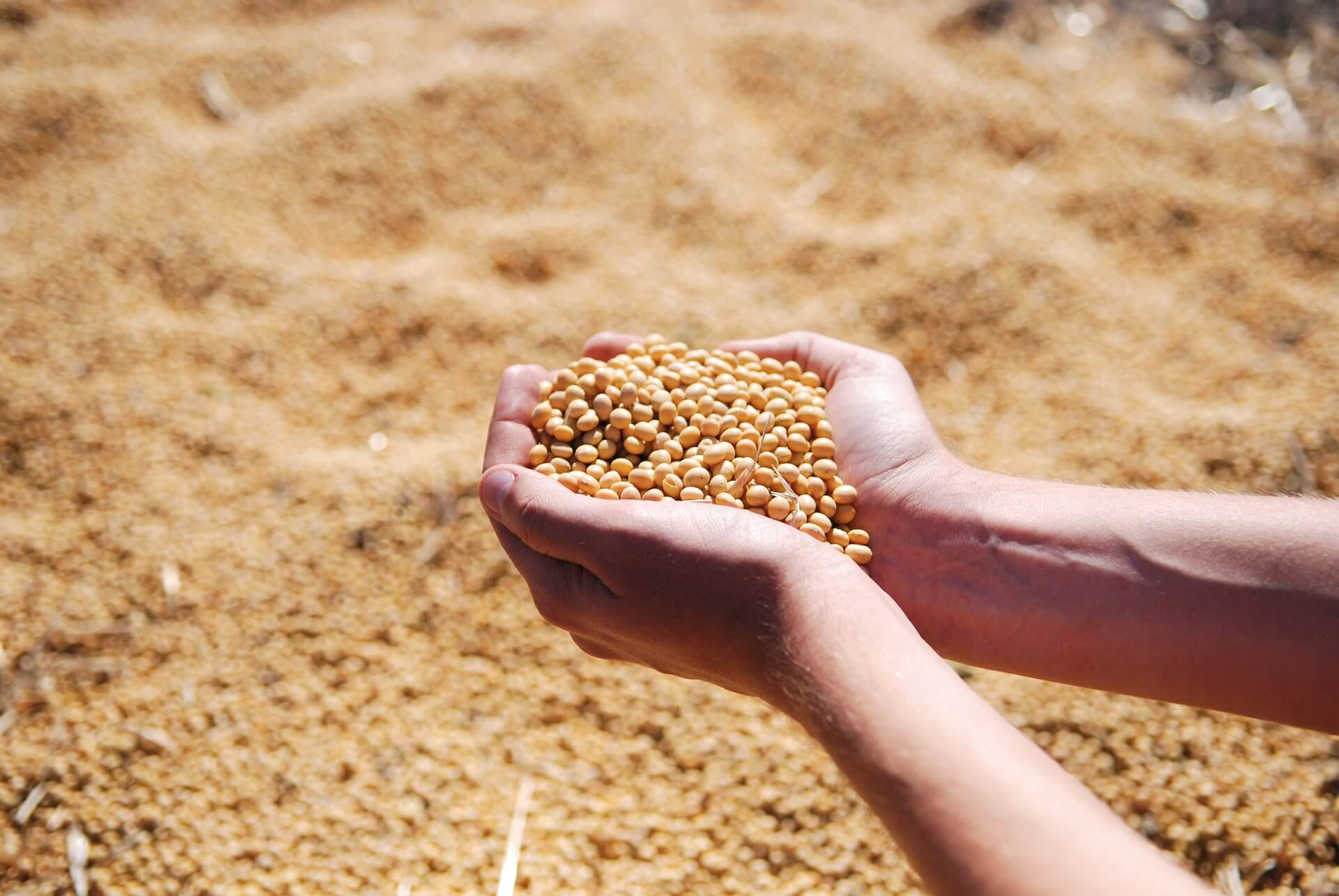
According to last week’s private production estimates for soybeans and soybean meal, there is a possibility of a solid output, which may reach over four billion bushels.
Wheat
US markets were mostly higher in nervous and thin trading. Traders were hoping that the weaker US Dollar would create new buying interest for US Wheat in world markets, but sales shown in the export sales report from USDA last week were not strong. Traders are also waiting for the USDA production and supply and demand reports that will be released Tuesday by USDA. The market expects USDA to trim US and world ending stocks projections by small amounts.
The market has been under pressure from ideas that there will be plenty of wheat available in the world market due to the big increase in production in Russia. Canada has also forecast better than expected production for the current year. Canada has suffered through conditions very much like the US, with hot and dry weather in western sections of the Prairies and some areas that were too wet in eastern sections. Australia also suffered from hot and dry weather at key times in the growing cycle, and less production has been forecast by ABARES and other sources.
Production ideas are now near 21 million tons for the country, but ideas are dropping as it is still dry and the plants are trying to fill kernels. US export demand is reported to be improving again as US prices are very competitive in the world market, and the recent trend to a weaker US Dollar has helped. Demand for US Wheat remains primarily for HRW and HRS, the higher protein wheats grown in the US.
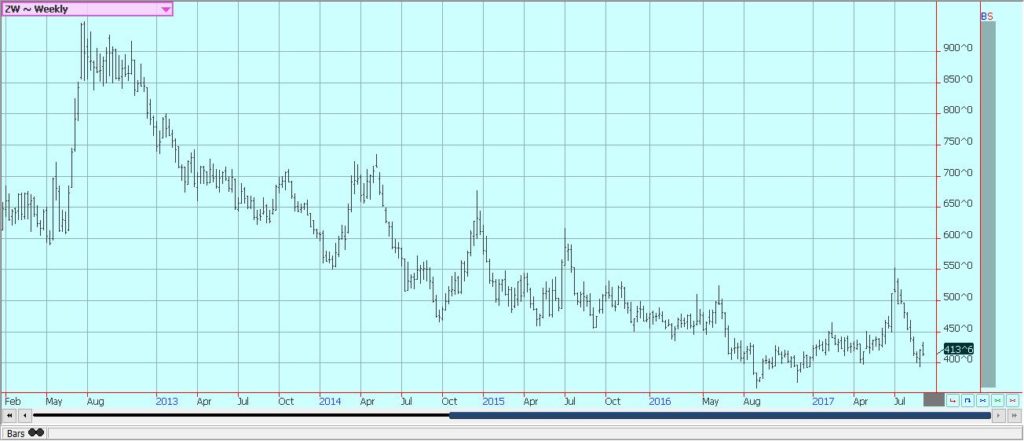
Weekly Chicago Soft Red Winter Wheat Futures © Jack Scoville
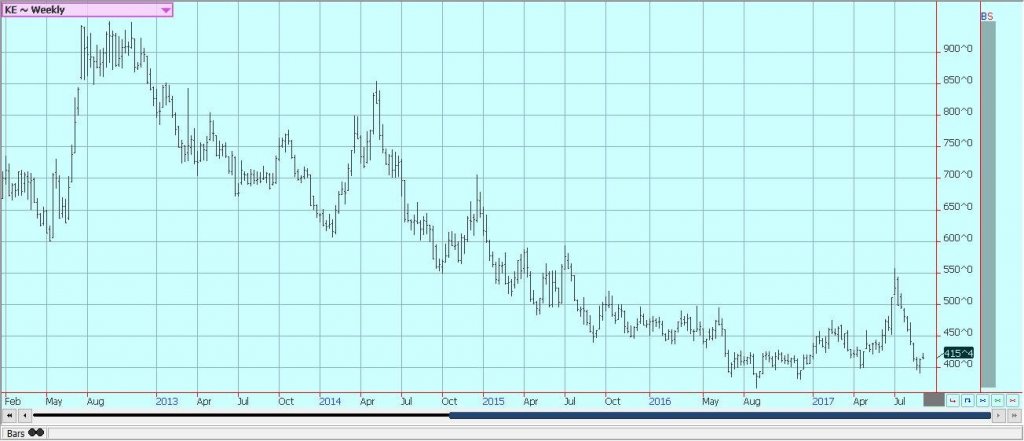
Weekly Chicago Hard Red Winter Wheat Futures © Jack Scoville
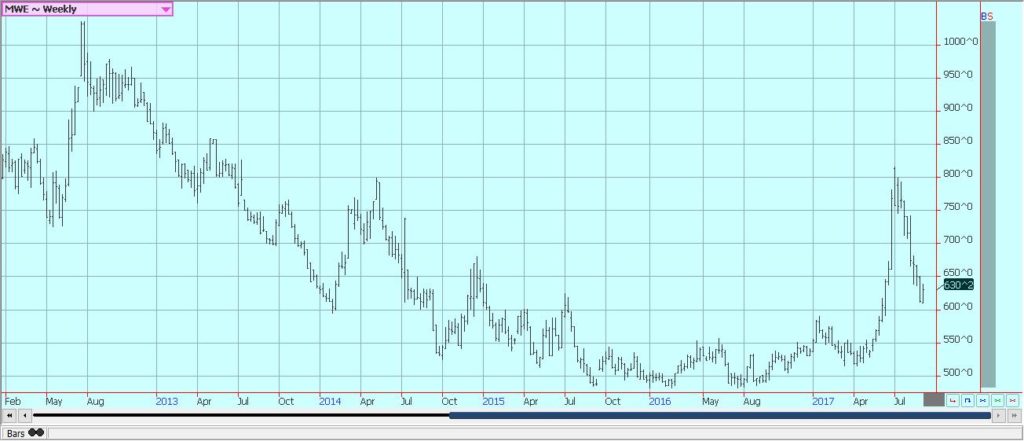
Weekly Minneapolis Hard Red Spring Wheat Futures © Jack Scoville
Corn
Corn was a little higher last week while Oats closed higher. The market will now start to get ready for the USDA production estimates on September 12. Private estimates generally show good production potential, but most analysts survey think that USDA will lower production estimates slightly. Monthly supply and demand data could show an increase in demand as the Census Bureau data last week showed bigger exports than those estimated by USDA. The private estimates imply that the US will have more than enough corn for internal needs and projected export demand.
Variable growing conditions continue as kernel fill continues. The Midwest will see cool weather and limited precipitation this week. Temperatures will be a little warmer than last week. The crop needs warmer weather to return to help push development towards maturity before temperatures can dip below freezing and hurt yield potential. It also needs another good rain event to help push yield potential, but there are no real significant rains in the forecast. Some crops in the Southeast could get hurt this week from winds and rains left by Hurricane Irma. Most affected states would be Georgia and South Carolina.
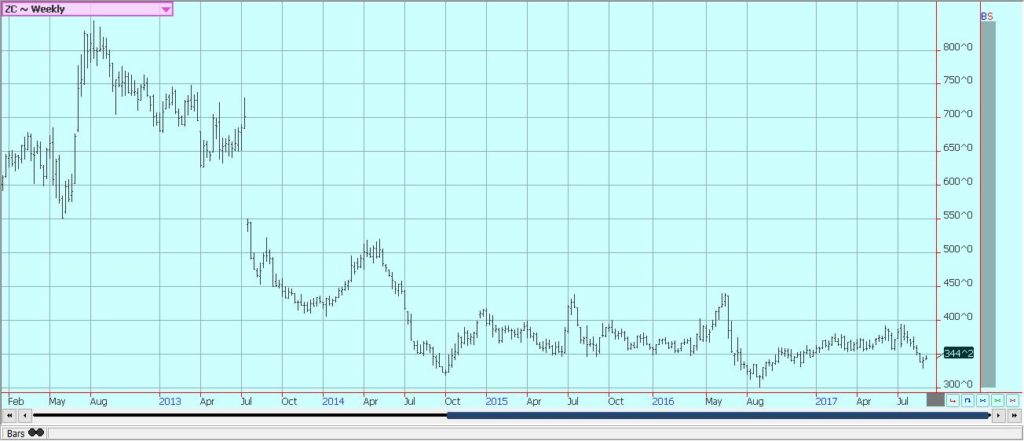
Weekly Corn Futures © Jack Scoville
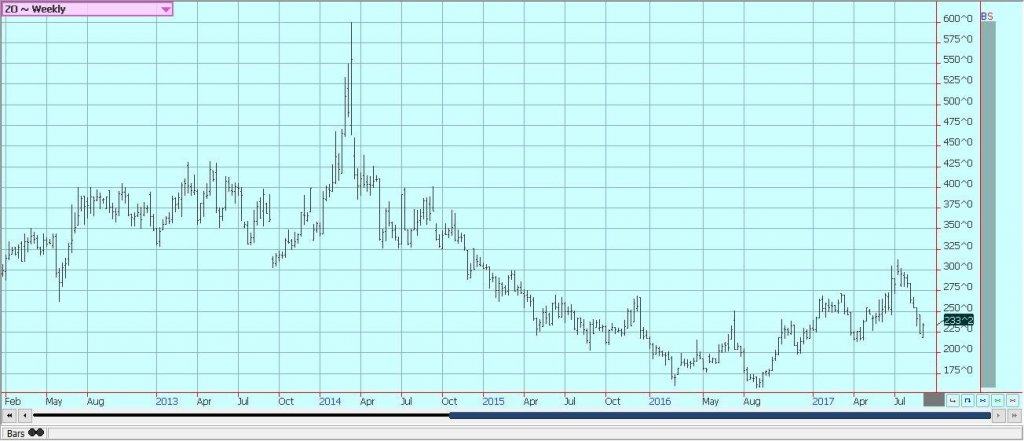
Weekly Oats Futures © Jack Scoville
Soybeans and Soybean Meal
Soybeans and Soybean Meal were higher last week as short covering from speculators continued and as some consumptive buying was noted. It was a nervous trade as the market got ready for the USDA reports on Tuesday and also kept an eye on the weather.
The private production estimates were released late last week and the estimates generally show the potential for strong production and production well above 4.0 billion bushels. The Census Bureau showed stronger than expected export data last week, so ideas are that USDA will increase demand in the monthly supply and demand updates.
There will be some warmer, but still, cool temperatures in the forecast this week, and the crop needs warm weather to realize its best production potential. The crop was planted late in many areas and is only starting to set and fill pods now. Many areas need more rain to fill the pods well, but there is no real significant rain in the forecast. The crop still has the potential for solid yields, but the current weather does not promote increasing yields.
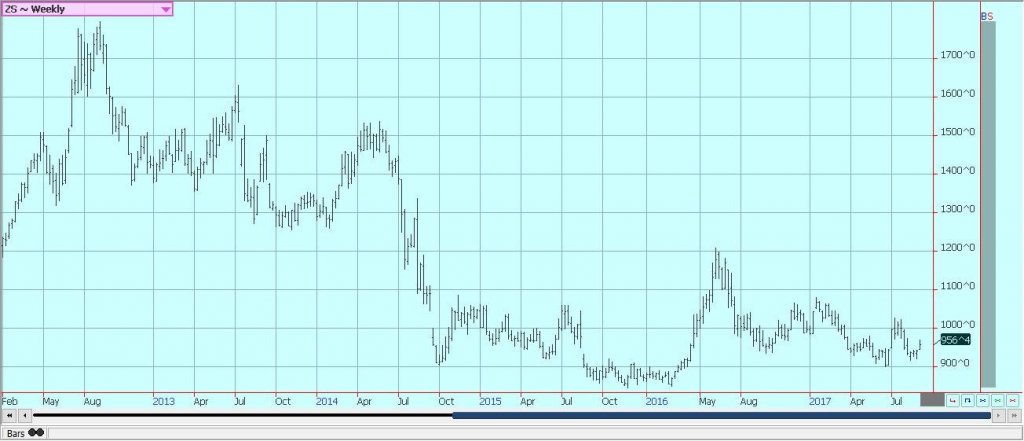
Weekly Chicago Soybeans Futures © Jack Scoville
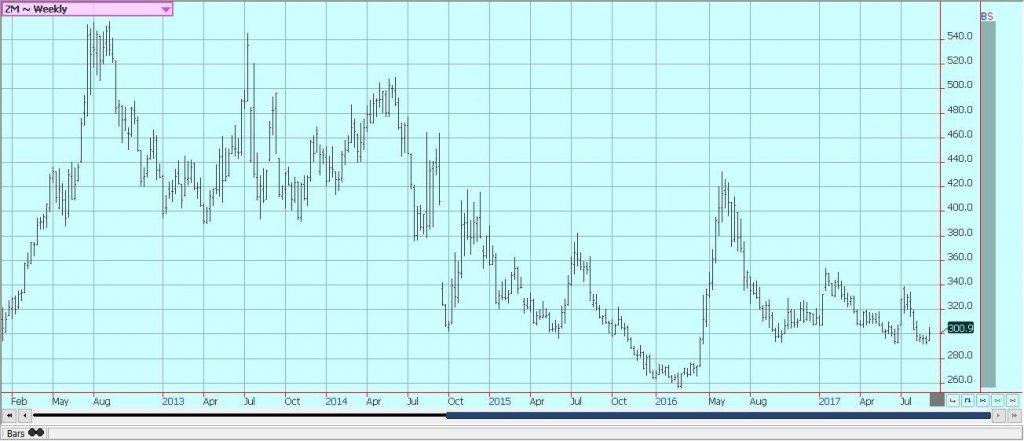
Weekly Chicago Soybean Meal Futures © Jack Scoville
Rice
Rice closed higher on Friday, but lower for the week. Harvesting resumed in Texas and Louisiana after Harvey left, and field yield reports have been variable in Louisiana and good in Texas. Crops are now ready for harvest in areas from Mississippi to Missouri, and some initial cutting has been reported. It has been cool, so the crop has been taking a while to get mature, but crops are getting to that point now. Crop potential in these states is an open question due primarily to harsh weather at the start of the growing season and variable conditions for much of the year, but producers seem to expect good quality crops and hope for very good yields.
Asian prices remain soft. The Asian market has been weaker in the last few weeks as the next harvest comes closer in many countries. Growing conditions are improved in India as the monsoon has been better as monsoon rains have generally been good. Most of Indochina and Southeast Asia have seen good weather.
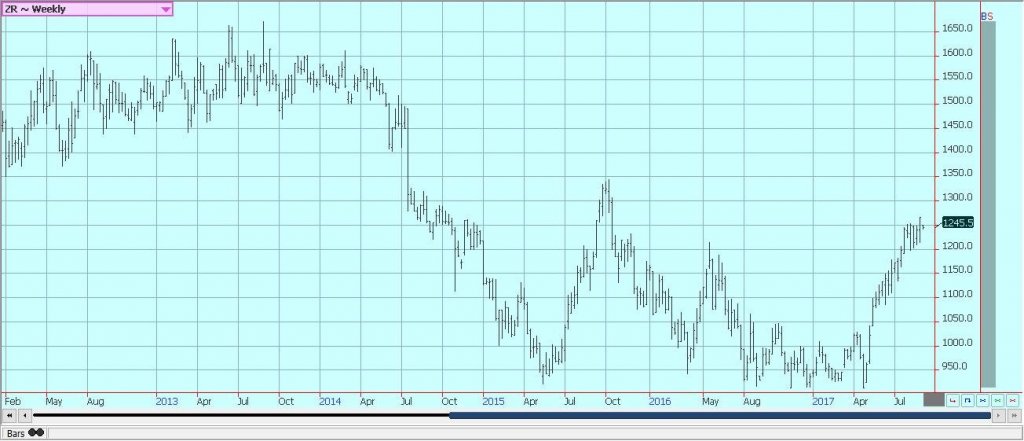
Weekly Chicago Rice Futures © Jack Scoville
Palm Oil and Vegetable Oils
World vegetable oils markets were mixed again last week, with palm oil higher and soybean oil and canola lower. Palm oil futures moved back close to recent highs as concerns about demand and stronger production surfaced again.
MPOB will be releasing its latest supply and demand reports this week and should show less production. There are ideas that production has now topped out and that trends will be for lower monthly production for the next several months. However, it might not matter if production drops if export demand continues to weaken. Export demand has become more stable in the last month.
Price trends remain up for palm oil. Soybean oil rallied again last week on follow through buying as the US government moved to impose dumping duties on imports of Argentine and Indonesian bio fuels. The market also rallied on the strength in petroleum products caused by Hurricanes Harvey and Irma. Harvey caused a lot of refining operations to close and caused products prices to rally. Irma forced many storage facilities in the islands and in the Southeast to close.
Ideas are that the stronger petroleum products prices could translate into higher demand for bio fuels. Canola was lower in part on the stronger than expected production estimates released by the Canadian government a week ago along with increasing harvest activity. Farmers have not really been selling yet, but probably will need to start soon as the futures market is showing that weaker prices are now possible. A primary negative for prices remains the strength of the Canadian Dollar against the US Dollar, and this could continue as the US Dollar has turned very weak.
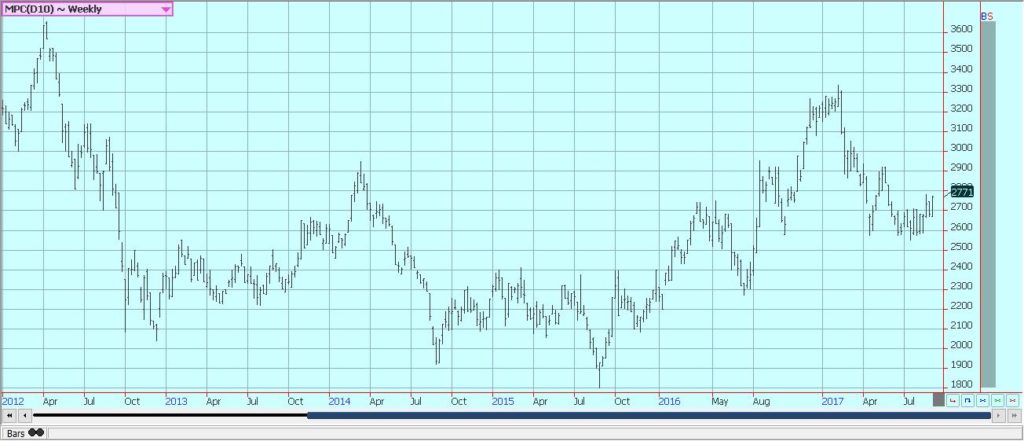
Weekly Malaysian Palm Oil Futures © Jack Scoville
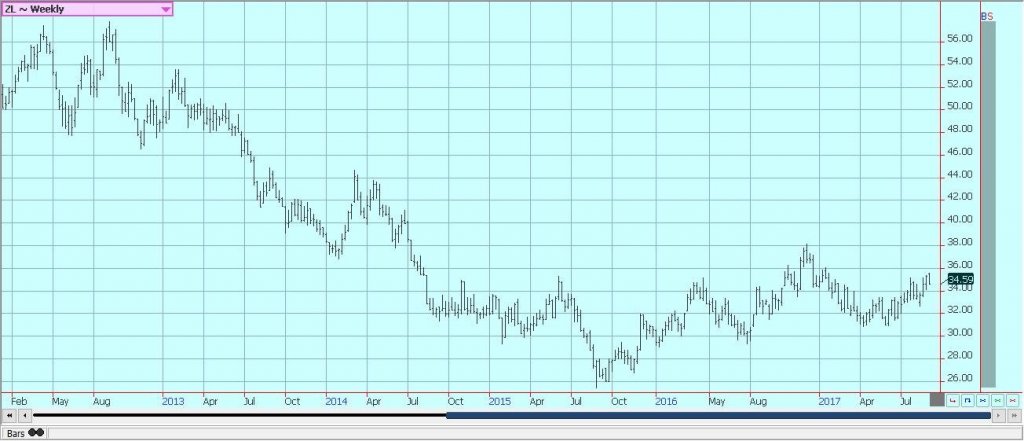
Weekly Chicago Soybean Oil Futures © Jack Scoville
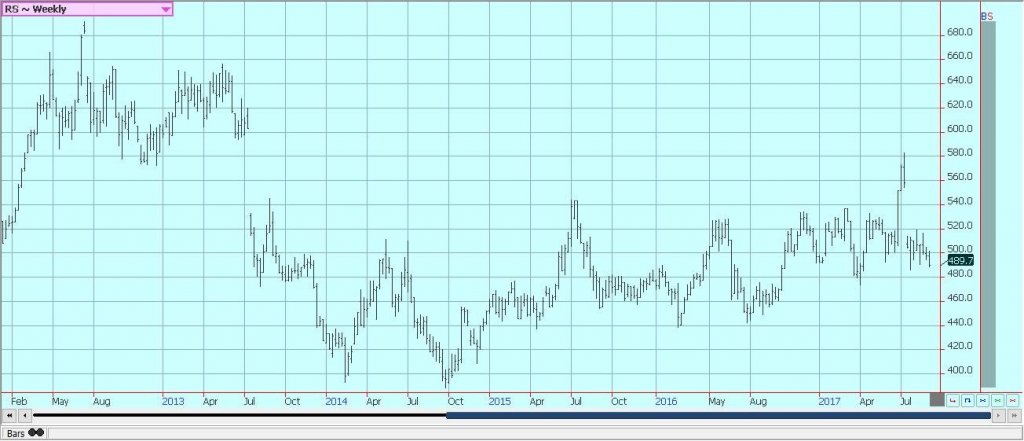
Weekly Canola Futures © Jack Scoville
Cotton
Cotton made new highs for the move as Hurricane Harvey loss assessments were made and as Hurricane Irma approached the Southeast. Harvey brought big rains of up to five feet into Texas and potentially hurt the quality and harvest progress in some areas of the state. Reports indicate that up to half a million bales of cotton were destroyed. Cotton in the Texas Panhandle was not affected in any big way.
Big rains were seen in the Delta last week as well. Irma will move into Georgia early this week with high winds and rains. The winds and rains could be enough to blow bolls off the plants and to damage the fibers in the open bolls. Georgia should have the biggest threat for loss, but the Carolinas could also be affected. Georgia is the second biggest cotton-producing state behind Texas.
Bolls are open or are opening now in just about all production areas. West Texas conditions are called good and the Southwest should be good despite hot weather this year. There is strong production potential in Asia, and mostly in India and Pakistan due to improved monsoon rains. Some rains are expected in most areas this week amid relatively moderate temperatures. Chinese growing conditions are good. Areas to the south of Russia are in good condition.
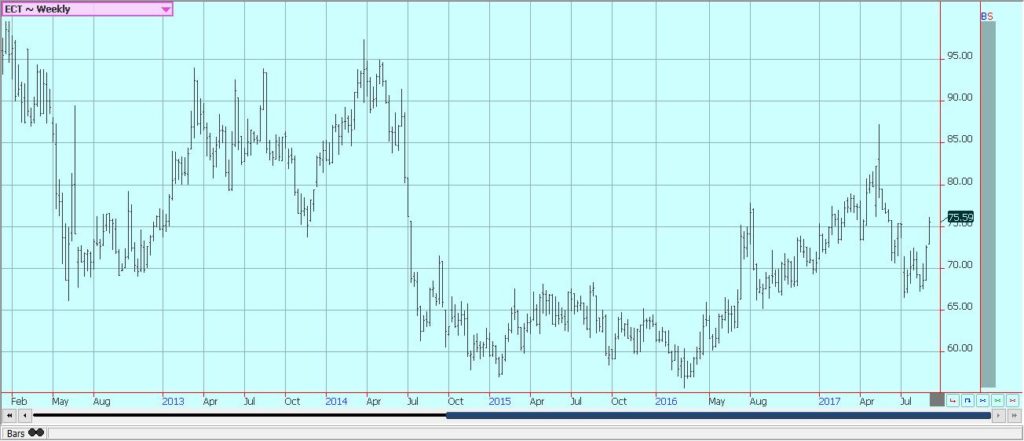
Weekly US Cotton Futures © Jack Scoville
Frozen Concentrated Orange Juice and Citrus
FCOJ closed higher on Friday and for the week as Hurricane Irma threatened the Florida production. Irma moved a bit farther west than originally expected and came up the west side of the state in the Gulf of Mexico. This was bad news for orange growers as it put them in the direct line for the most damaging winds and rains. There is potential for major production losses as the fruit is not yet mature, but is big.
Improved year on year production had been expected this year, but this potential is probably gone now and there is a chance that production now can be less than last year. Damage assessments will be made this week as the storm moves north into Georgia and other Southeast and Mid South states. The demand side remains weak and there are plenty of supplies in the US. Brazil crops remain in mostly good condition and production estimates are high.
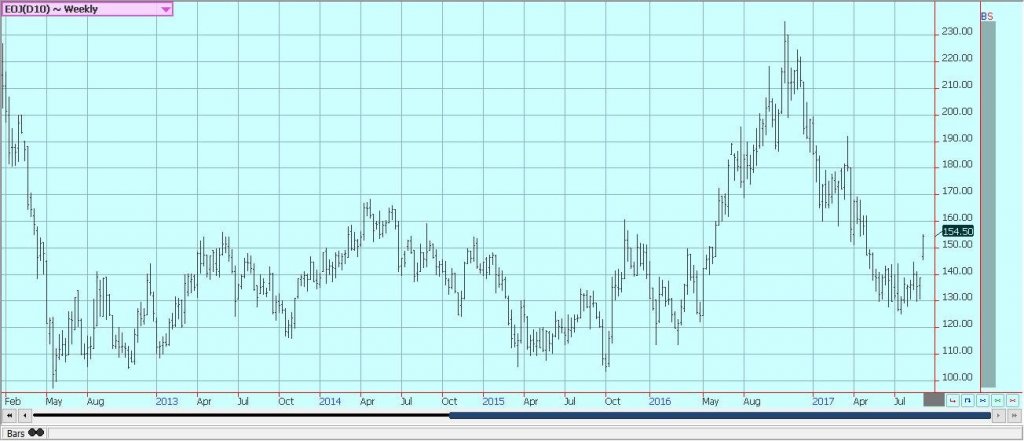
Weekly FCOJ Futures © Jack Scoville
Coffee
Futures were stable in New York and lower in London last week, with commercials scale down buyers and speculators doing much of the selling. The trends are down on the charts in London, but sideways in New York. The Brazil harvest is wrapping up, and traders and producers are reporting low quality and small beans.
There is still some concern about dry weather there as recent rains have caused the first flowering in many areas. There is some talk that the rains and flowering came too early and that at least some flowers could be aborted if an extended dry period arrives. However, it is normally a dry time, so the potential for losses is a matter of debate right now. It was dry last week and should be dry this week.
Cash market conditions in Central America remain quiet as the next harvest is getting started. There is coffee to sell, but little buying interest from anyone. Colombia has reported some difficult growing conditions, but exports have held well as production appears to be good due to younger trees that are more vigorous and produce better under more stressful conditions. There are reports that trees in Brazil are defoliating and aborting leaves which could mean bad news for the next crop production potential.
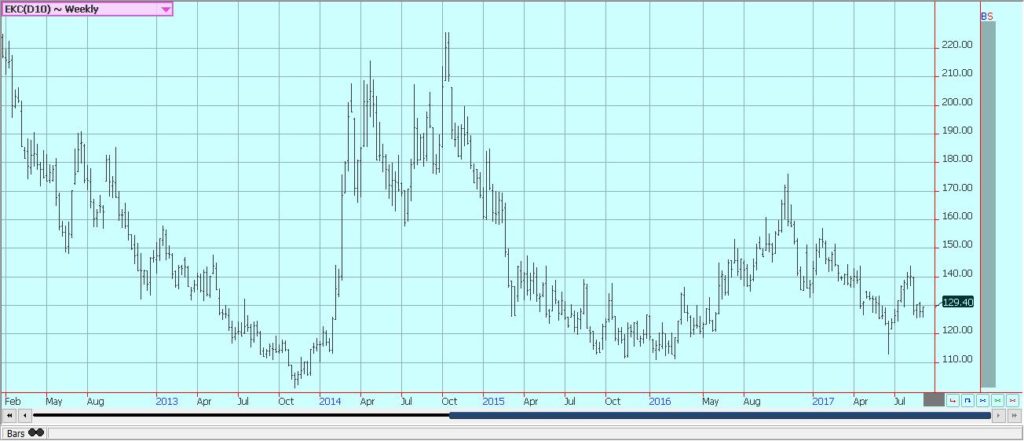
Weekly New York Arabica Coffee Futures © Jack Scoville
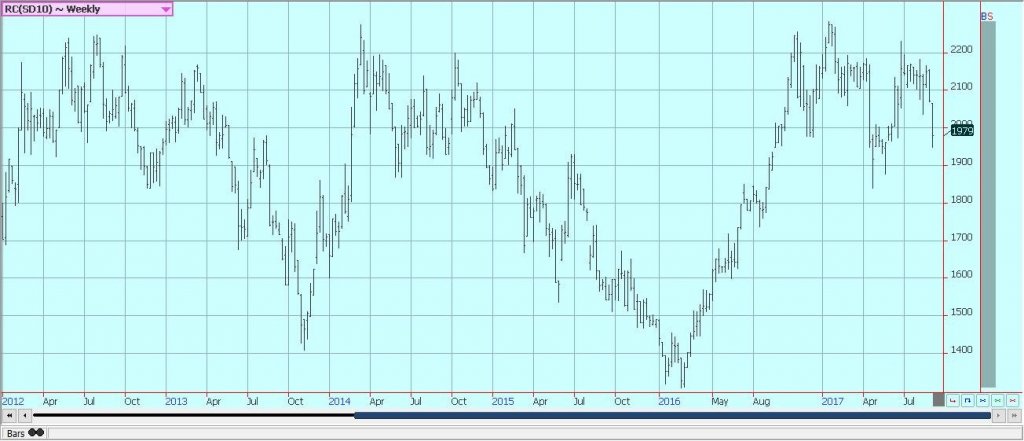
Weekly London Robusta Coffee Futures © Jack Scoville
Sugar
Futures were a little higher in New York, but lower in London, and prices remain in a short term trading range. Hurricane Irma is headed to the southeast US after hitting sugar production areas in Florida. These areas are near the lake and probably saw some extreme winds and rains. It is still a very powerful hurricane and will cause a lot of damage as it moves north into Georgia. It has hurt some areas in the islands and any sugar in these areas was damaged or lost.
The market expects firmer prices over time in part due to the moves in Brazil to increase ethanol production through higher gas prices and as the Indian harvest could be delayed due to wet conditions that would delay sugarcane harvesting. Overall upside potential is limited as there are still projections for a surplus in the world production, and these projections for the surplus seem to be getting bigger over time.
Trends are mixed, but the market has a positive feel to it. Production potential in Thailand seems strong as monsoon rains have been better than last year. It is raining in much of India now as the monsoon is active, and reports indicate good to heavy rains in many areas.
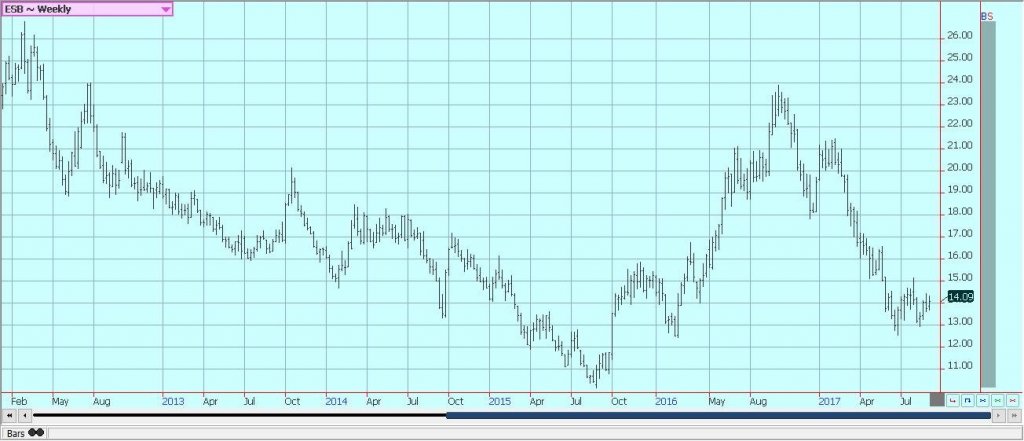
Weekly New York World Raw Sugar Futures © Jack Scoville
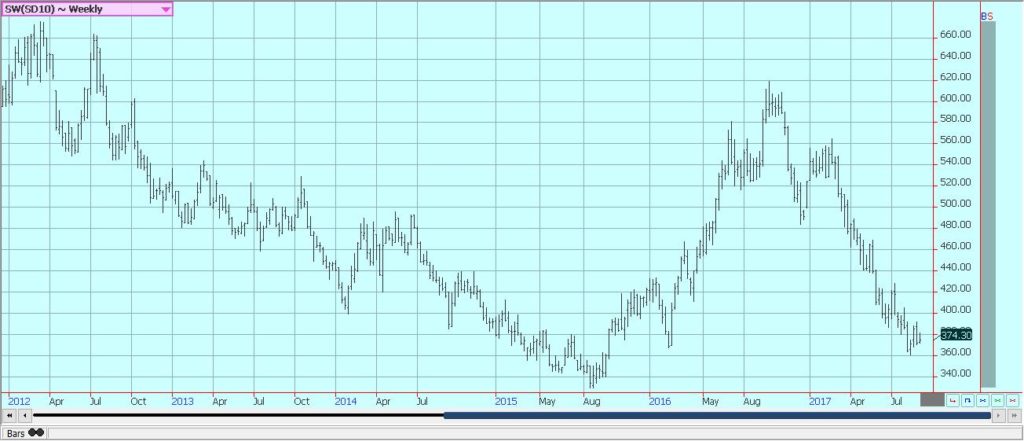
Weekly London White Sugar Futures © Jack Scoville
Cocoa
Futures markets were lower last week but remain in a broad trading range. The market is starting to hear harvest reports from West Africa. Nigeria and Cameroon have both noted strong production from the initial harvest. Ghana said it now expects higher production than in initial estimates and above 800,000 tons. The demand should continue to increase if prices remain relatively cheap and as retail prices continue to move lower in important consuming areas like Europe.
Grinders and chocolate manufacturers are able to make plenty of money with current differentials. The next production cycle still appears to be big since the growing conditions around the world are generally good. Ivory Coast has already sold 1.32 million tons of Cocoa into the world market, and selling is reported from other countries as the harvest has started. East African conditions are too dry but there is still a crop growing and generally, good production is expected. Good conditions are still being reported in Southeast Asia as it has turned seasonally drier in growing areas of Indonesia and Malaysia.
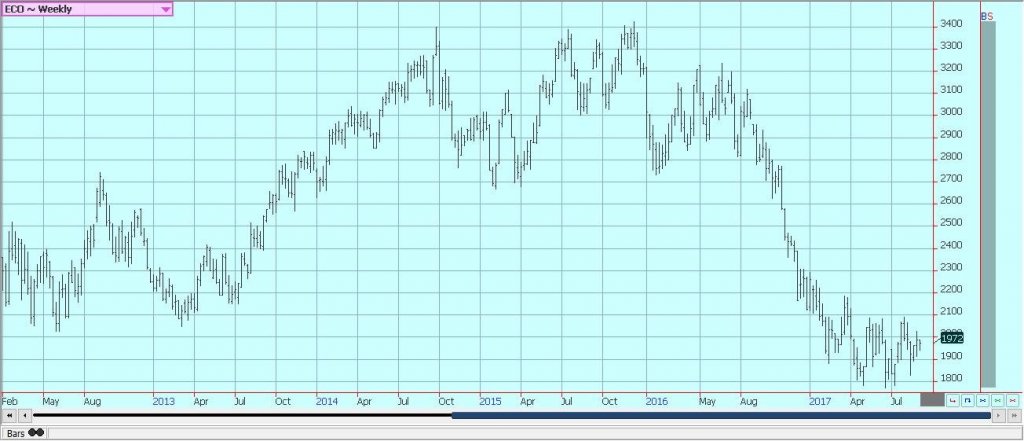
Weekly New York Cocoa Futures © Jack Scoville
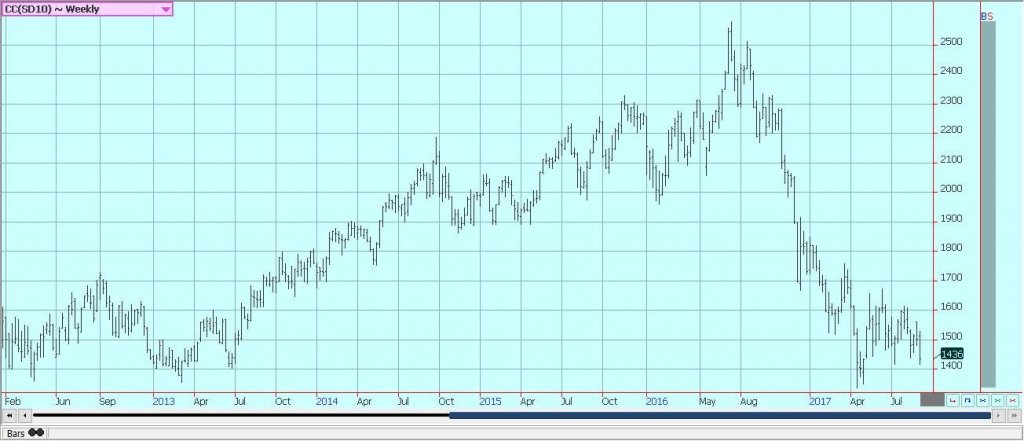
Weekly London Cocoa Futures © Jack Scoville
Dairy and Meat
Dairy markets were lower again last week. The trade expects higher Butter prices due to very good demand and adequate supplies. However, futures were lower last week and closed the week on a weak note. Cheese prices have been relatively weak and also made new lows for the move. Demand is good for cream, but cream has generally been available to meet the demand.
Cream demand for butter has been very good. Demand for Ice Cream has been mixed depending on the region but is becoming less now as the US Summer comes to a close. Cheese demand still appears to be weaker and inventories appear high. US production conditions have featured some abnormally hot weather in the west that is hurting milk production. Production in the rest of the country has been strong.
US cattle and beef prices were lower and trends in cattle futures remain down. The beef market remains weaker in the last couple of weeks, although somewhat better last week. Cattle prices were tough to gauge last week as the cash market really did not trade. It is the threat of increased supplies down the road that keeps the packers from buying aggressively.
Feedlots are filled and cattle will continue to be offered to the cash market. However, ideas are that more supplies are coming as weight per carcass is high and more cattle is coming to the market. Demand will turn lower and will shift to roasts and things like that now that the Summer is ending and there is less for the barbeque.
Pork markets and Lean Hogs futures were weaker on a seasonal trend to lower demand. Ideas are that futures are too cheap to cash and that the spread between the two need to come together more than they are now. Demand has been lower for the last couple of weeks and this has affected pricing. Demand starts to work lower as most of the Summer buying is done. Buying will start to shift away from grill items to items for the oven. There are plenty of supplies out there for any demand. The charts show that the market could work lower.
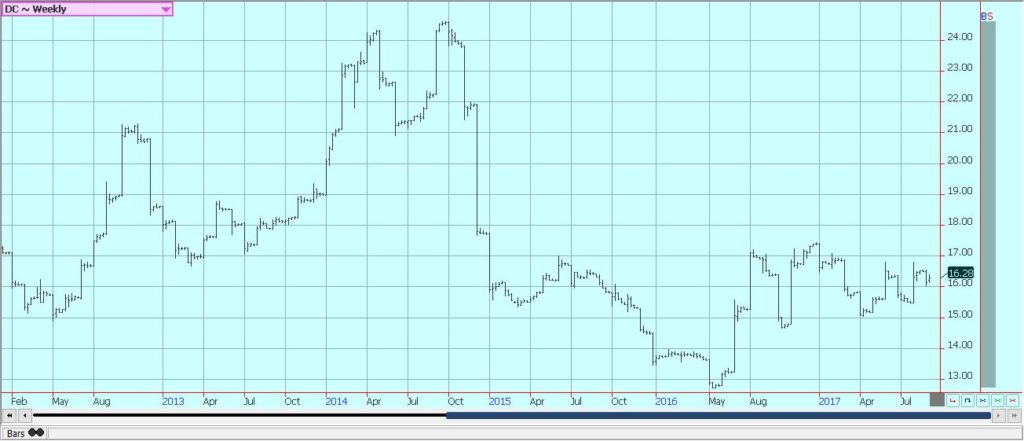
Weekly Chicago Class 3 Milk Futures © Jack Scoville
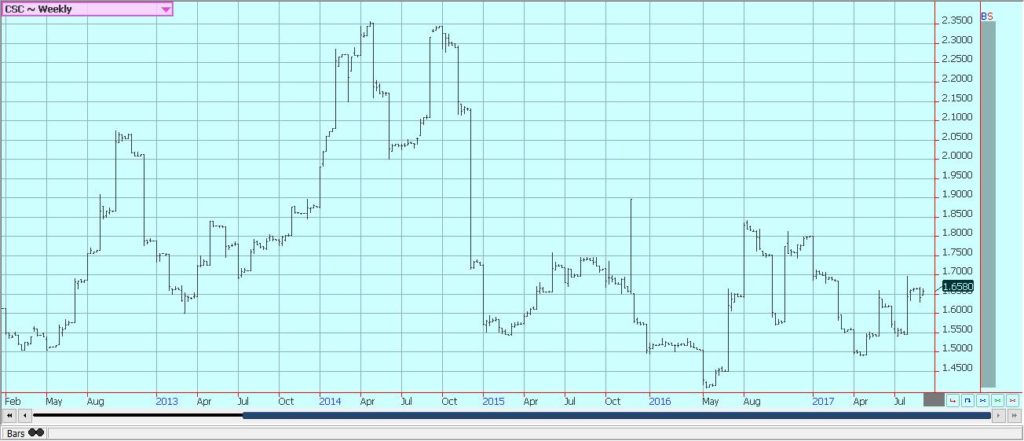
Weekly Chicago Cheese Futures © Jack Scoville
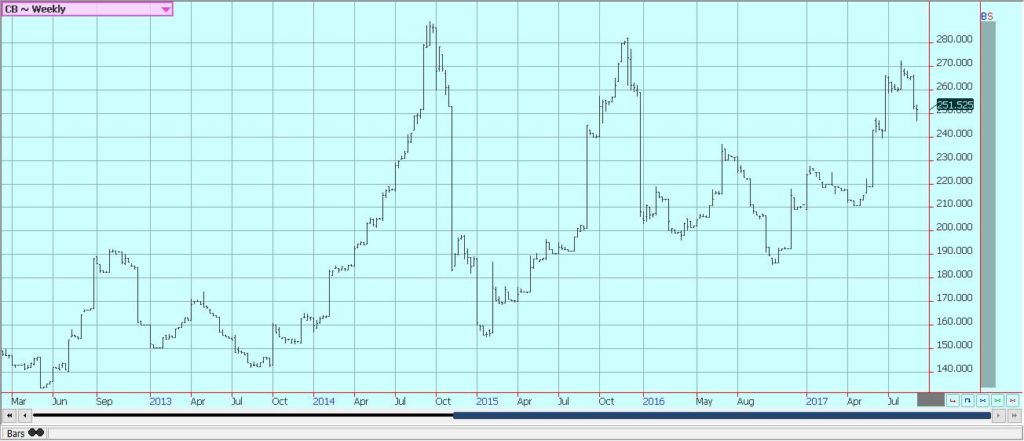
Weekly Chicago Butter Futures © Jack Scoville
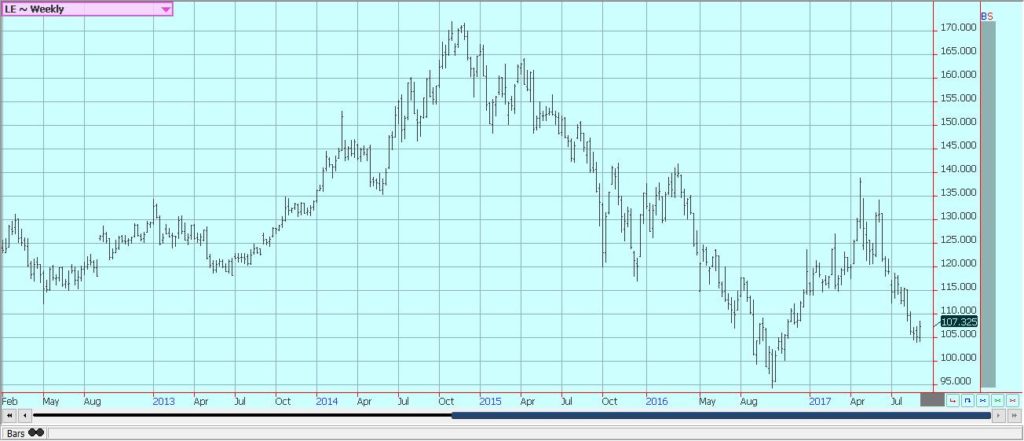
Weekly Chicago Live Cattle Futures © Jack Scoville
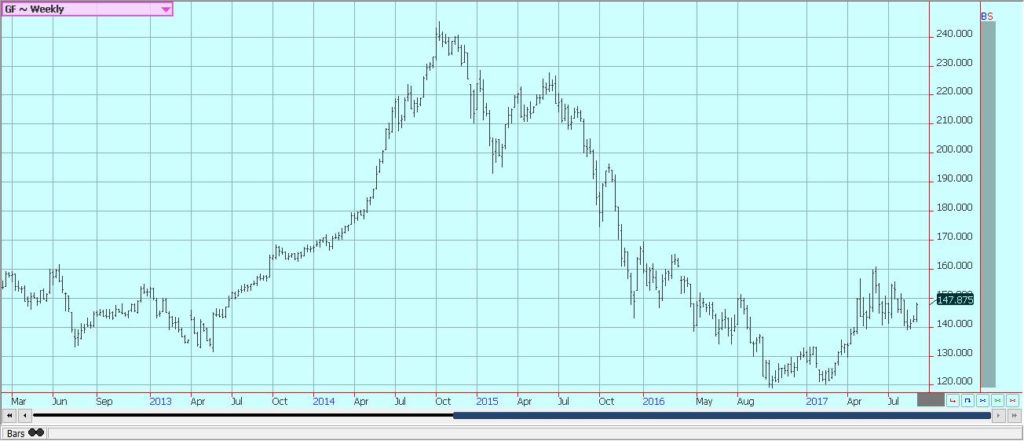
Weekly Feeder Cattle Futures © Jack Scoville
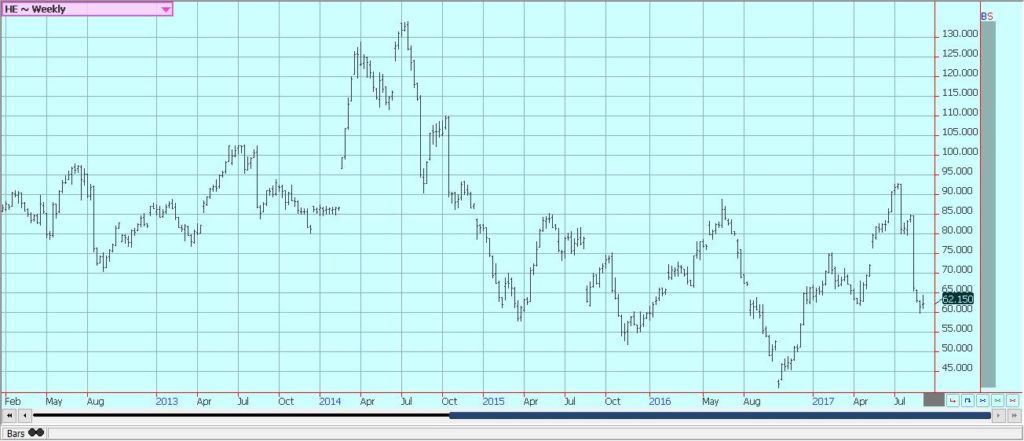
Weekly Chicago Lean Hog Futures © Jack Scoville
—
DISCLAIMER: This article expresses my own ideas and opinions. Any information I have shared are from sources that I believe to be reliable and accurate. I did not receive any financial compensation in writing this post, nor do I own any shares in any company I’ve mentioned. I encourage any reader to do their own diligent research first before making any investment decisions.

-

 Biotech3 days ago
Biotech3 days agoMedical Research in 2025: A Turning Point for Precision and Personalized Medicine
-

 Markets2 weeks ago
Markets2 weeks agoDow Jones Strength Faces Risk From a Potential Yen Carry Trade Unwind
-

 Impact Investing1 week ago
Impact Investing1 week agoChristmas Plastic Waste and the Path to Circular, Low-Emission Solutions
-

 Africa3 days ago
Africa3 days agoDamane Cash and FMSCD Partner to Enable Cash Advance in Exchange Offices
























You must be logged in to post a comment Login